Please view our updated COVID-19 guidelines and visiting procedures →.
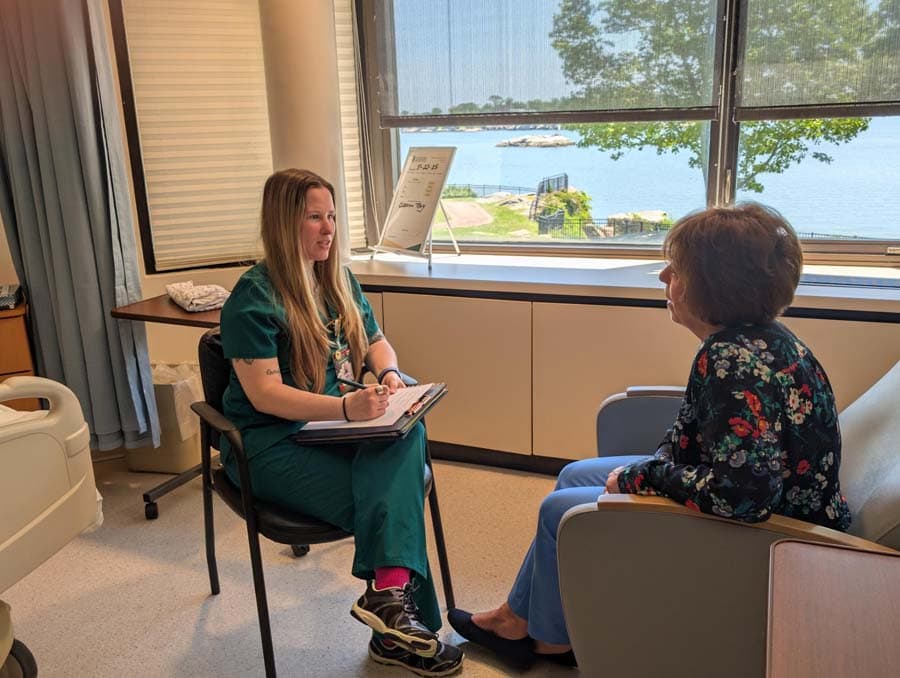
It takes many professionals to provide the excellent care for which Connecticut Hospice is renowned. Previous blogs have recognized the critical role of nursing, arts and volunteers in patient care. This month, we are pleased to acknowledge the essential contributions of our hospice social work department.
Social work occupies a central position in the inpatient and outpatient hospice setting. Patients and families are at a critical juncture in life; emotions and the need for psychosocial care are intense. Reactions to terminal illness and impending death include fear, depression, denial, anger and anxiety. Long standing patterns of family dysfunction and the patient’s need for autonomy can further compound and complicate already complex end-of-life care issues. It is this environment of physical and emotional turmoil the social worker confronts, acting as a guiding and stabilizing force to help patients and families navigate this most difficult human experience.
The role of a hospice social worker is a multi-faceted one. At its core, it involves collaborating with other health professionals to improve quality of life, and to encourage preparedness and coping of patients and families dealing with life-limiting illnesses. This is initially achieved by completing a comprehensive psychosocial assessment, necessary to help patients and families understand care options related to their goals and life circumstances and to identify local services and resources for additional practical support.
The hospice social worker also functions as a therapist, addressing the emotional aspects of late-stage illnesses and helping patients and families come to terms with the end-of-life process. Supportive counseling helps families and patients process grief and loss, mitigates prolonged grief, and provides therapeutic emotional support for their well-being and comfort.

Finally, the hospice social worker advocates for each patient’s end-of-life wishes, recognizing the right of patients and families to self-determination. As an integral part of the interdisciplinary team, the hospice social worker provides psychosocial expertise, vitally contributing to the holistic approach to patient and family care in the hospice environment.
You will never be bored.
You will always be frustrated.
You will be surrounded by challenges.
So much to do and so little time.
You will carry immense responsibility and very little
authority.
You will step into people's lives and you will make a
difference.
Some will bless you
Some will curse you.
You will see people at their worst . . . and their best.
You will never cease to be amazed at people's capacity for
love, courage, and endurance.
You will see life begin . . . and end.
You will experience resounding triumphs and devastating
failures.
You will cry a lot.
You will laugh a lot.
Should you be interested in availing a loved one confronting the end of life with the social work, medical, nursing, arts, and other services offered by Connecticut Hospice, please call the admissions department at 203-315-8540.

In celebration of National Nurses Month, May’s blog will recognize the enormous contribution of nursing to the hospice movement – in the United States and worldwide.
The Connecticut Hospice, Inc., America’s first, was founded by Nurse Florence Wald. After earning her Masters in Nursing in 1941 and serving in the United States Signal Corp in World War Two, Florence was Dean of the Yale School of Nursing from 1959 to 1966, and became a full Professor of Nursing in 1980. Inspired by the work of Dr. Cicely Saunders, a one-time nursing student who started the modern hospice movement at St. Christopher’s Hospice in London, she founded The Connecticut Hospice in 1974, making it not only the first hospice in America, but the first hospice in the world to care for patients at home.

Fifty years later, The Connecticut Hospice remains a leader in the hospice movement in Connecticut, the United States, and around the world. The contributions of nursing, not only at Connecticut Hospice, but to hospice nationwide, cannot be overstated. Hospice care is nurse-driven, nurse-supported, and nurse-provided, whether it is delivered to patients at home, in assisted living or skilled nursing facilities, in free-standing hospices, or in hospital-based hospice.
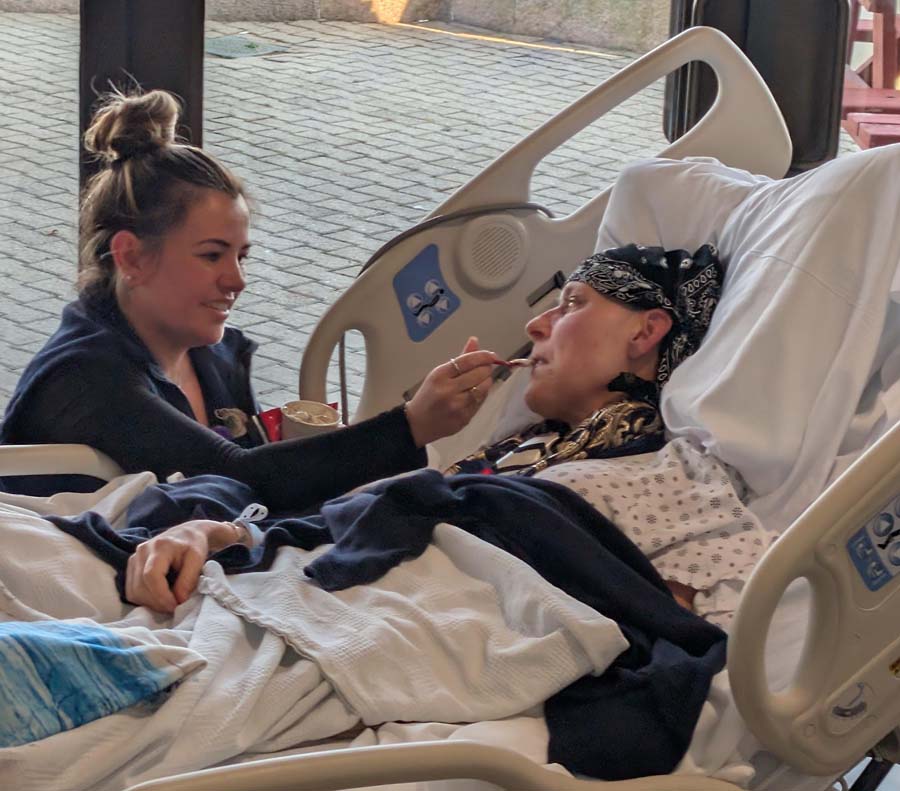
Hospice care of unparalleled excellence is provided by the nursing staff of The Connecticut Hospice, headquartered in Branford and crossing the state from Fairfield in the west, Meriden in the north, to Essex and Westbrook in the east. Nine full-time registered nurses, two full-time licensed practical nurses, and seven full-time certified nursing assistants serve patients at home, in nursing homes, and in skilled nursing facilities, providing 24-7 availability for visits, complementing social work, volunteer, and spiritual care staff.
Additional nursing staff caring for hospice inpatients in our 52-bed licensed inpatient facility on the water in Branford includes eighteen registered nurses and eleven certified nursing assistants. Senior leadership also sees its complement of nurses, with a new RN Chief Executive Officer, and an RN Chief Operating Officer, Director of Home Care, and Director of Inpatient Nursing. Four advance-practice registered nurses serve our palliative care and GUIDE patients and provide inpatient medical care in collaboration with the physicians of the Department of Medicine. Physician staff, in contrast, consists of one full-time, and four part-time MD/DOs.

The Connecticut Hospice exemplifies the critical role and importance of nurses in American health care. Join us in celebrating them for National Nurses Month, May 2025.
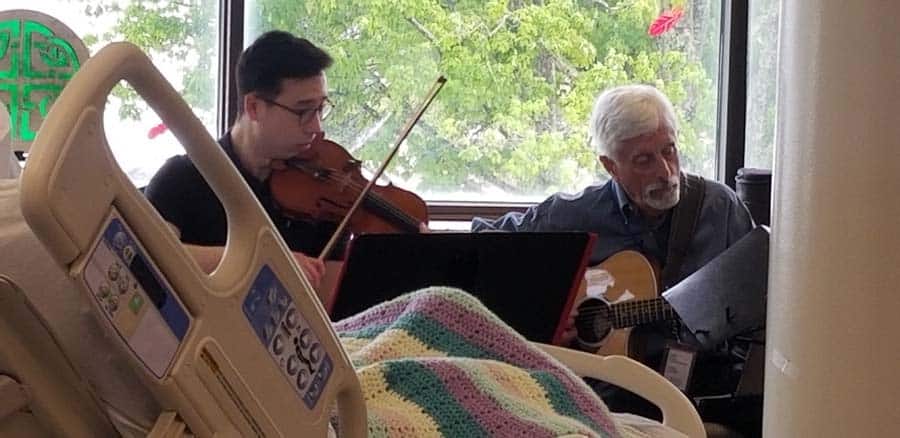
“When my mother was in Connecticut Hospice, she was so beautifully cared for by the staff. One day, I walked in, and a volunteer was sitting by her bedside while she was resting comfortably. The volunteer had been with my mother until I came. That level of care is what drew me to volunteer at The Connecticut Hospice. The notion that I could bring the same comfort to someone else has kept me volunteering for many years now,” said Sandy Piontek (Volunteer since 2018).
Hospice is unique as it is the only provider with Medicare Conditions of Participation that require volunteers to provide a significant portion of patient care hours. In 1983, when the Medicare Hospice Benefit was approved by Congress and signed into law by President Reagan, it was deemed that 5% of a hospice’s total care-giving staff is required to be unpaid (volunteer).
The Connecticut Hospice was founded in 1974 by Florence Wald, a nurse educator, and other healthcare professionals, including doctors, nurses, and clergy. Volunteers have played a critical role from the very start. For example, also in 1974, CT Hospice provided the first hospice home visit in the U.S., conducted by a nurse and a volunteer. Today, The Connecticut Hospice relies on the invaluable contributions of over 200 volunteers who work alongside staff in its Branford in-patient facility and in homes across the state.
Volunteers provide a wide range of support to patients and families. Volunteers assist in all areas of operation, including hands-on patient care assisting the inpatient medical staff, homecare, arts & music, as well as spiritual care, social work, transportation, gardening. and special events.
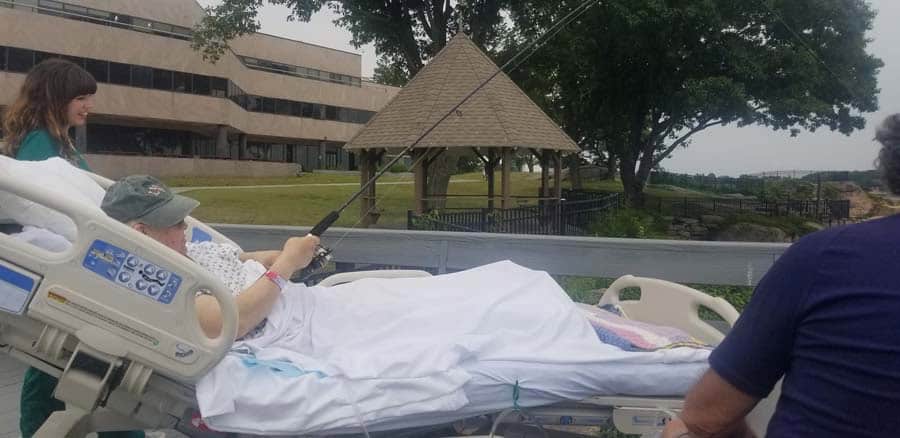
The volunteer network includes working professionals, homemakers, retirees, students, and even grade school children involved in special projects.
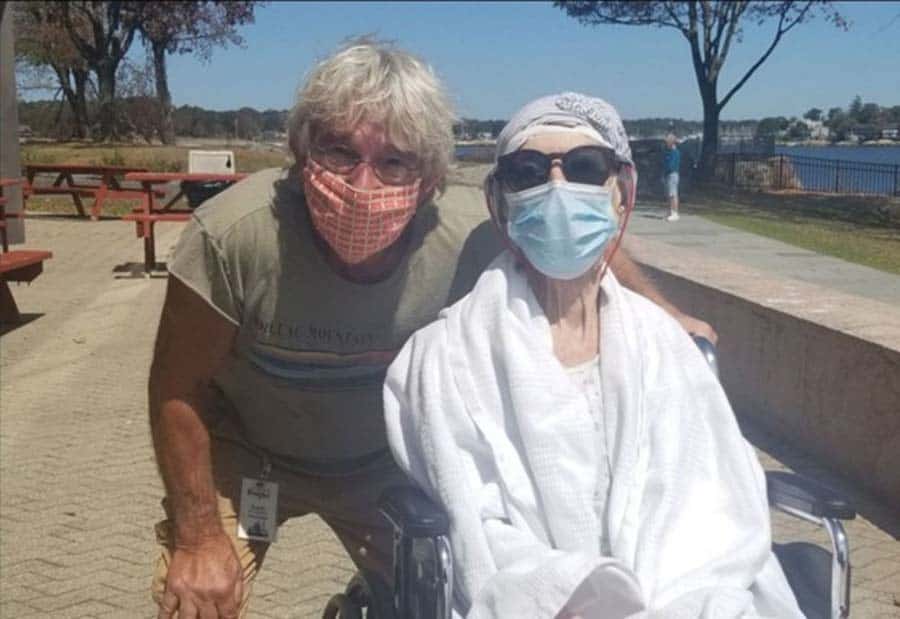
Prospective volunteers undergo background checks and fingerprinting through the Dept. Of Public Health. They also receive professional training from our hospice staff, ensuring they are well-prepared to assist patients and their families.
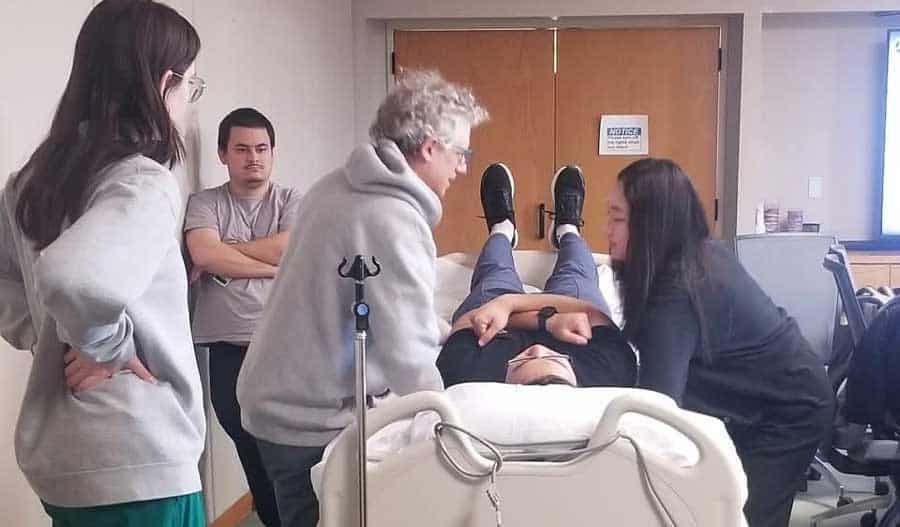
Connecticut Hospice collaborates with local colleges and schools to integrate volunteer programs into community action initiatives. For example, we have a very special relationship with Yale University undergraduates. Students who are generally pre-med volunteers in the Patient Assist role. They are rigorously trained in body-mechanics and invited to shadow Dr. Brett Prestia under the John D. Thompson Institute program.
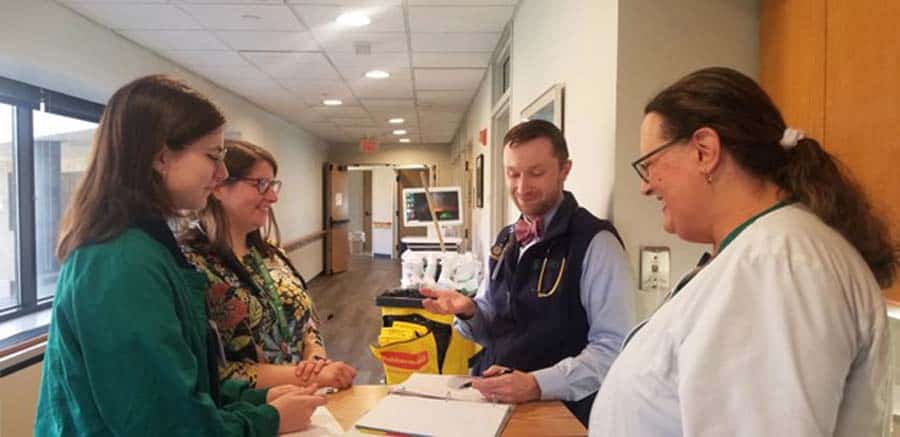
“As a physician at Connecticut Hospice, I see every day how essential our volunteers are to the care we provide. Their presence brings comfort, companionship, and a human touch that cannot be prescribed or charted. Whether they’re sitting at the bedside, offering a listening ear, reading to a patient, or simply being present in silence, volunteers meet emotional and spiritual needs in ways that deeply complement our medical care. They help create an atmosphere of dignity, compassion, and peace—not just for patients, but also for families and staff, " said Dr. Brett Prestia, Chief Liaison.
Volunteers are part of the heartbeat of our hospice. They remind us that healing isn’t always about curing—it’s about connection. Their time, presence, and kindness are gifts that have a lasting impact. Volunteers are humble, selfless and have a quiet strength as they work alongside the medical team during some of life’s most sacred moments. They are a core part of the team, and we learn so much from them. Connecticut Hospice draws from a rich well of diverse experiences, backgrounds, and talents that help our patients and organization thrive. Volunteers from all walks of life ranging from high school to retirement are valued in so many ways. We appreciate their dedication and emphasize again that anyone who desires to serve in any capacity has a respected place in our organization.
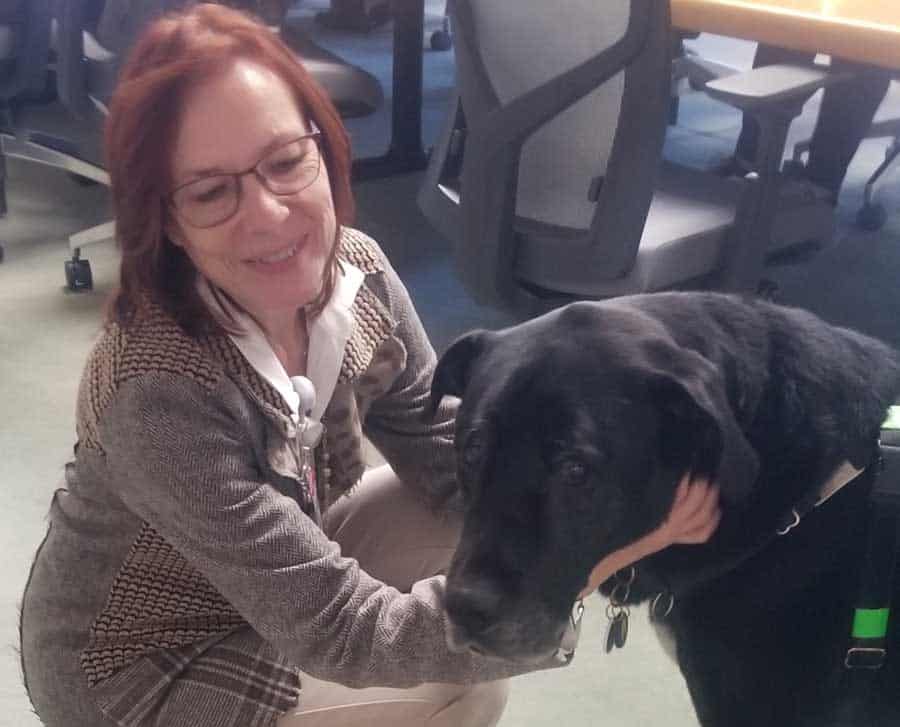
To learn more about volunteering at Connecticut Hospice, contact Joan Cullen at [email protected].
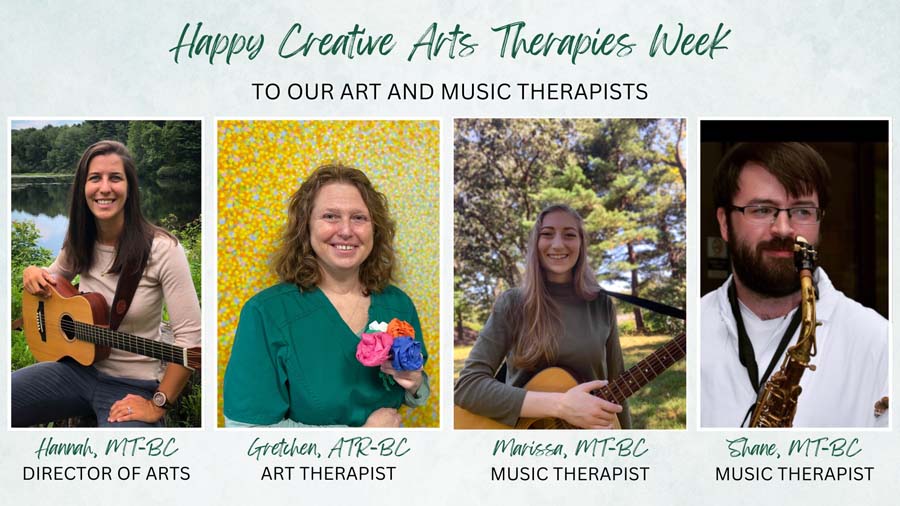
“A young lad stands!” exclaimed an individual living with dementia, as they translated the first line of their favorite song, “Tumbalalaika” during a music therapy session. In that moment, one with such limited speech prior to engaging in the music, was able to not only sing along, but translate a lyric from Yiddish to English.

As a budding music therapy student at Berklee College of Music, this became a formative experience for Hannah Righter, now the Director of Arts at Connecticut Hospice. To see firsthand the impact music can have on reconnecting individuals to the present moment – so much so that they are able to engage in ways they could otherwise not due to disease progression – was truly eye-opening.
Since then, there have been numerous studies conducted supporting the global neurological engagement that takes place even while passively listening to music (Toader et al., 2023). When combined with the strong emotional connection many have with music, this results in the ability to use music to bypass damaged areas of the brain. This is paramount for individuals diagnosed with dementia, who, through music, can connect with their loved ones in meaningful ways.
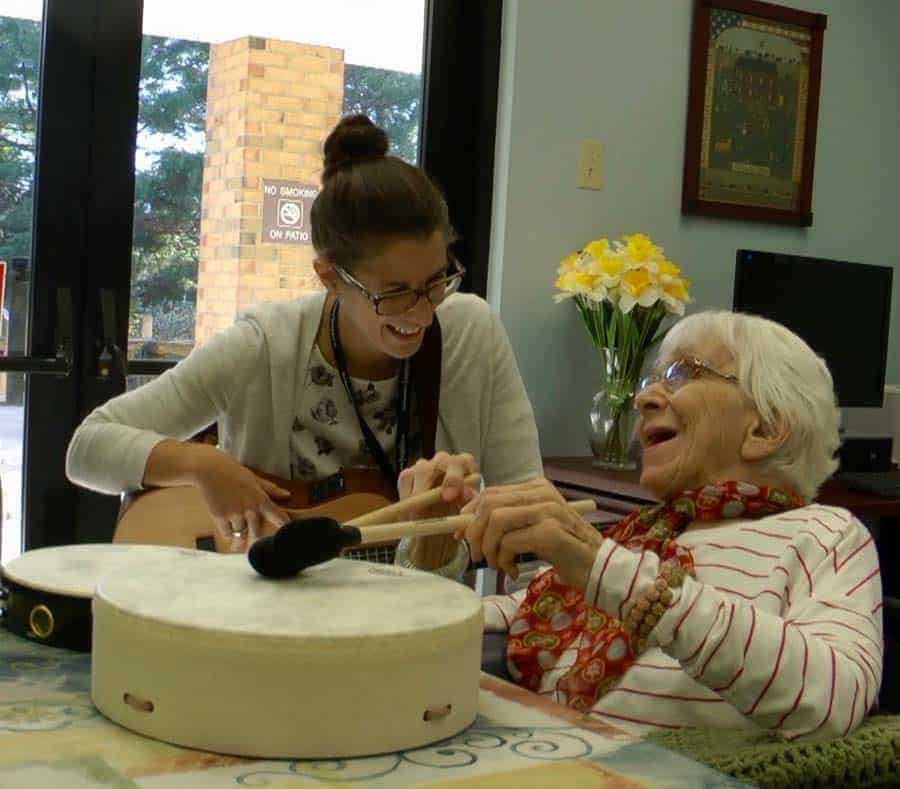
The responses evoked by the music might not always be as grandiose as regaining the ability to translate from one language to another. Sometimes, it may be as seemingly subtle as tapping to the beat or maintaining eye contact. Yet, each of these moments can be just as profound as the next. It’s these interactions that highlight the power of the arts in fostering connection, even when verbal communication becomes more difficult.
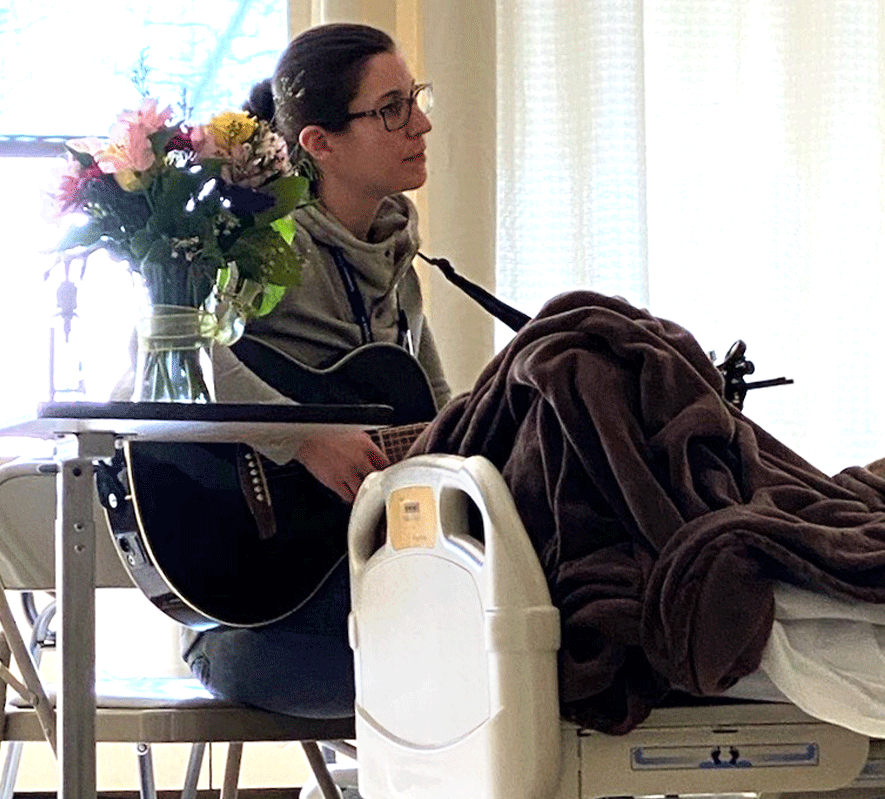
The story touched upon above is just one of many that speak to the impact the arts can have on patients receiving hospice and palliative care. At Connecticut Hospice, the integration of the arts is woven into the fabric of their care approach, ensuring that every patient and their loved ones have the opportunity to experience art, music, and other forms of creative expression. Whether it’s actively engaging in music and creating a piece of art or passively listening and watching, the arts can play a key role in fostering connection, comfort, and peace.
Connecticut Hospice can proudly celebrate its legacy as the first hospice founded in America, but its remarkable history extends beyond that. In 1979, they became pioneers in the provision of excellent end-of-life care once yet again by incorporating the arts into their interdisciplinary team approach, establishing one of the first Arts programs in hospice care. Since then, the Arts Program at Connecticut Hospice has only continued to grow, expanding its reach through a diverse team of art and music therapists, volunteers, students, and a highly skilled portrait artist.
With Creative Arts Therapies Week falling in the third week of March, it's the perfect opportunity to recognize the invaluable contributions of Connecticut Hospice’s art and music therapists, who work closely with patients and their families both at their inpatient facility and in the community. Their therapists are dedicated to enhancing quality of life for as long as life is lived. Through the power of art and music, they address goals that extend beyond artistic or musical achievements, focusing on emotional, mental, and spiritual well-being.
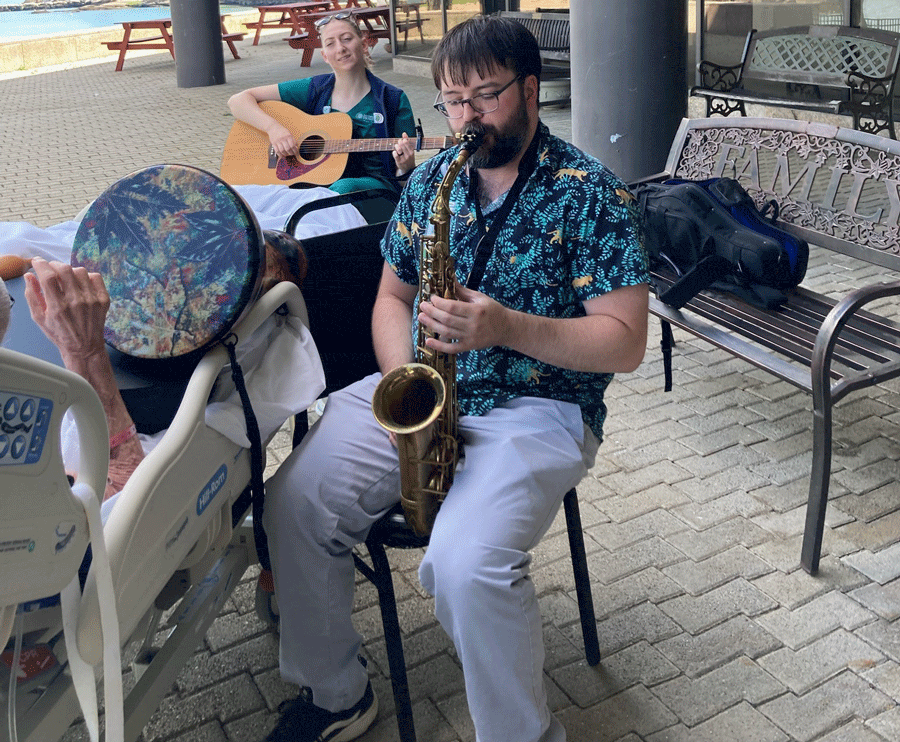
Whether it's using patient-preferred music to increase relaxation, collaborating with an art therapist to create a meaningful gift for a loved one, or helping patients express themselves by composing a song with a music therapist, their work promotes connection and healing. Hospice’s art and music therapists work to create a space where individuals can confront, explore, and articulate complex emotions while also finding creative ways to honor and celebrate a life lived. Ultimately, one of the most rewarding aspects of their work is helping provide patients and families with the chance to create lasting, positive memories, even in the most challenging of times.
Discover how the arts bring comfort, connection, and healing to hospice patients. Explore Connecticut Hospice’s Arts Program to see how you can support or get involved.

Opioids are commonly used to relieve pain and shortness of breath in seriously ill people and those at the end of life. While highly effective, these drugs also cause side effects that may limit their use.

Addiction – also called opioid use disorder – is believed by many to inevitably result from prolonged use of opioids, but this concern is unmerited when these important medications are used appropriately by experienced practitioners.
Common opioid side effects such as sedation, constipation, and nausea usually wear off within a few days of use and can be countered with other medications. For example:

Other, less potent but effective pain medications include:

Adjuvant medications are drugs that are not primarily designed for pain relief but can help manage pain by either enhancing the effects of traditional pain medications or providing their own analgesic properties. They are especially useful for neuropathic pain, which often does not respond well to opioids alone.
Adjuvants include medications that either:
Used for:
Used for:

Used for:
Used for:
Used for:

While it is beyond the scope of this blog, all these agents have side effects and toxicities. Anyone using them should:
Pain is often worsened by underlying conditions, such as:
Managing these conditions alongside pain treatment can significantly improve overall well-being.
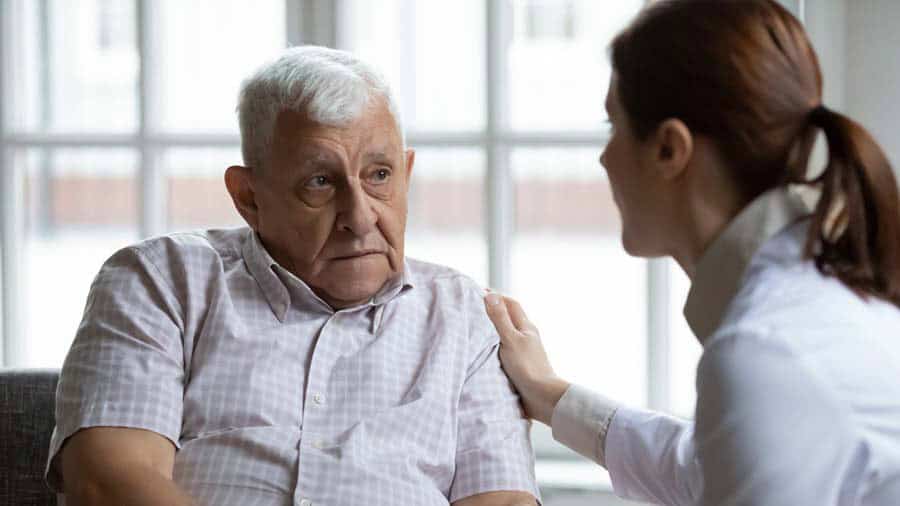
At Connecticut Hospice, we specialize in expert pain and symptom management for patients facing serious illness and end-of-life care. Our dedicated team understands that effective pain relief is essential to maintaining comfort and dignity.
Whether through outpatient care or our licensed inpatient hospital, we provide the highest level of personalized pain relief and symptom control to enhance quality of life.
Compassionate, expert pain relief is our priority. Let us help you find comfort and dignity at every stage of care.
Call us today at 203-315-7543 to learn more or schedule an appointment.
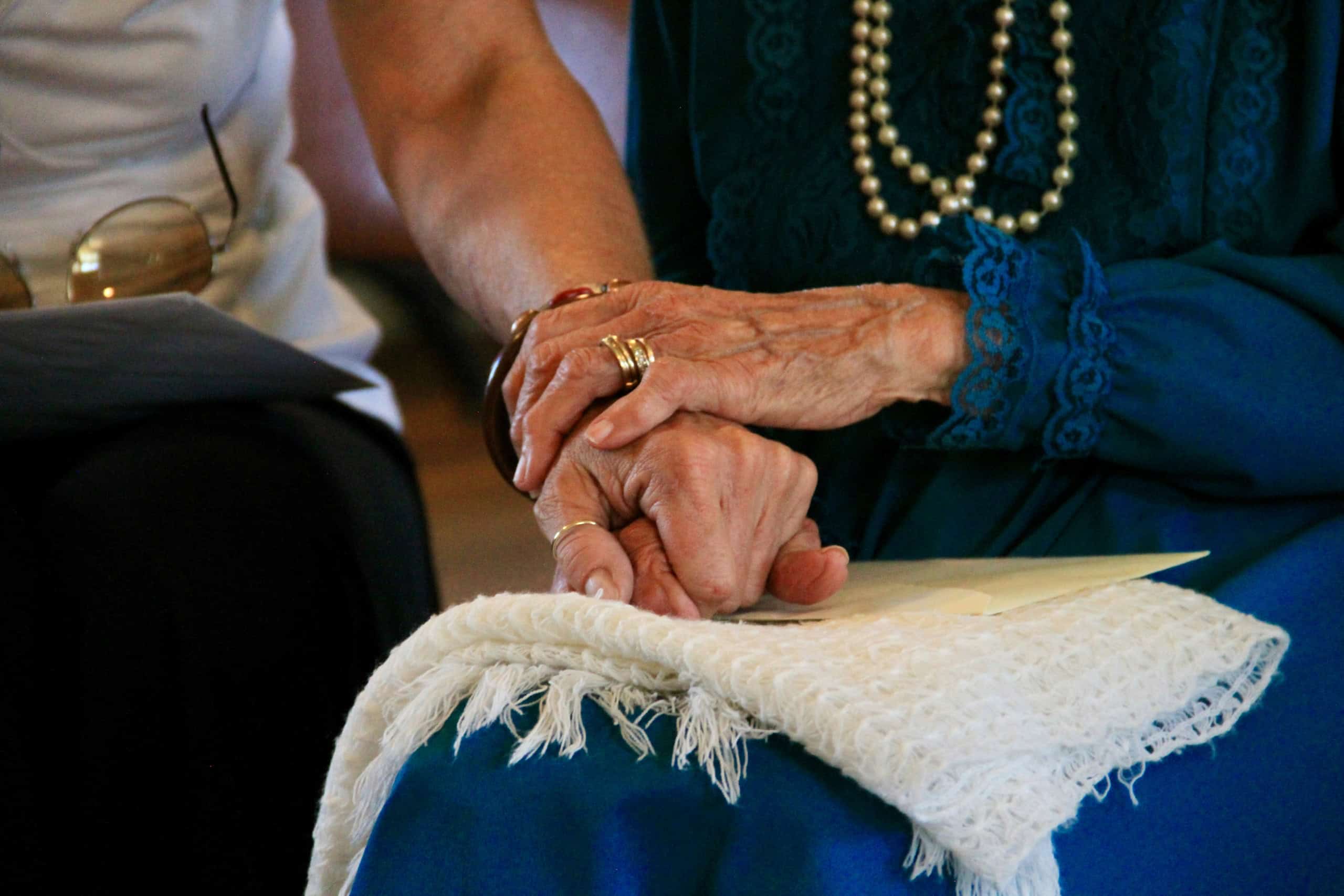
As we age, our needs evolve. For seniors, these changes may include complex health conditions, mobility issues, or memory impairment, making it harder to manage daily activities. Navigating these challenges can be overwhelming for both seniors and their families. This is where Geriatric Care Management services come into play—offering essential support to help seniors lead healthier, safer, and more fulfilling lives.
What is Geriatric Care Management?
Geriatric Care Management is a specialized service that provides personalized care coordination for older adults. Geriatric Care Managers (GCMs), also known as aging life care professionals, are trained to assess the needs of seniors and create a comprehensive care plan tailored to their unique situations. This service helps families ensure that their loved ones are receiving proper care while improving their quality of life.
Key Services Provided by Geriatric Care Managers
The Benefits of Geriatric Care Management
When to Consider Geriatric Care Management Services
Geriatric Care Management services are beneficial in various situations. Some examples include:
If you notice that your loved one’s health is declining or that daily activities are becoming increasingly difficult to manage, it might be time to consider the support of a Geriatric Care Manager.
In conclusion, Geriatric Care Management is a valuable service that provides older adults with the support they need to age with dignity, comfort, and independence. By partnering with a trained professional, seniors and their families can ensure that the right care is delivered at the right time. Whether it's coordinating medical care, managing emergencies, or simply offering guidance, a geriatric care manager can make all the difference in enhancing the lives of aging adults and their families.
If you're considering Geriatric Care Management services, JDT Care Solutions, a new program under The Connecticut Hospice umbrella of services, offers a free 15-minute professional consult to determine how a geriatric care manager can best support you or a loved one’s unique needs.
Please contact Lorraine Castronova, MSW, LCSW
JDT Care Solutions, Geriatric Care Manager
Email: [email protected]
Office: 203 315 7692
Cell: 203 500 2850
As a not-for-profit, we depend on generous donors to help us provide customized services and therapies that aren’t completely covered by Medicaid, Medicare, or private insurance.
Please make a gift to help us sustain the highest standard of care.
Admissions may be scheduled seven days a week.
Call our Centralized Intake Department: (203) 315-7540.